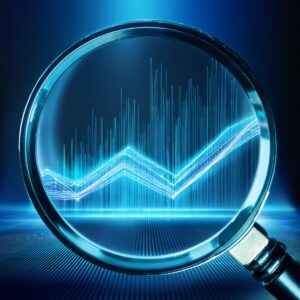Our objective is to reduce your uncertainty by enabling fact-based decisions using the best information available. We deliver actionable insights, recommendations, and processes based on understanding what is said, what is meant, and the context that motivates behavior.
Discovery is the First Step
Markets and customers are complex. We sift, sort, structure, and clarify your core challenges, and identify root causes that hinder your achieving your strategic objectives.
Discovery is the first step toward the insights that deliver differentiated business growth. Defining the solution you seek or the root cause of your challenge sets our work in motion. In the discovery stage, we depend on our qualitative tools:

Analysis is the Key to Understanding
A profound understanding of how customers perceive your business, your products or services, and your competition opens the door to market-based decisions. We use innovative, state-of-the-art analytics and apply processes grounded in Lean Six Sigma. Through analysis, we capture insights that lead to growth and more effective marketing. We let the marketplace tell you what motivates your customers.
Market or industry analysis, the natural next step after the Discovery stage, is at the core of innovation and successful growth. Practitioners tend to use the term Voice of the Customer, or VOC, to represent their willingness to do the required market investigation that some call market research and the subsequent market analysis of the data they collect from customers they want to serve. Many businesses find themselves trapped in a “one approach fits all” mindset when they do their market investigation. We use a broad spectrum of VOC collection, analysis, and tools, selecting what works best based on your business objectives.
In the Analysis stage, we use the Breakthrough Innovation Hub™ to help you learn how to best grow an existing business with your existing product set. Many of these tools are also used to identify the road to innovation, but the questions are tailored to a new business or offering under consideration. The analysis helps your business define the following:
A new value proposition
Targeted positioning and pricing
New business models (what you must do differently to grow)

The best approach is to open the respondent’s mindset to discuss their issues and ideal states, and to employ creative thinking as much as possible.
Market Space Investigation ensures that your business does not overlook potentially valuable, market-specific opportunities for your innovation idea, and helps your business narrow down your most promising opportunities. Rapid Market Assessment focuses on the full market, recognizing that different user sets and different levels in the value chain (the business activities and processes involved in creating a product or performing a service) may expose us to different concerns and opportunities. Group Exploratories use diverse stimuli to elicit fresh insights and explore solution options to address quantitatively.
Innovation from Insights

By combining market knowledge and insights, our experience and creativity, and what you do best, we reveal patterns of profitability. We then translate those patterns into recommendations for innovative offerings and business models. All we do flows from your strategy and objectives.
In the Innovation stage, we like to build off qualitative learnings by utilizing the Breakthrough Innovation Hub. With this, we can analyze the following:
Product attribute importance and performance
Desired outcome importance and performance
Concepts and competitive products
Value for individual concept features
We can identify customer segments based on how respondents address the exercises, and slice the learnings by these segments for more specific analysis. The outputs of the Breakthrough Innovation Hub analysis are a business case for the concept and design specifics for the product or service solution.
Success is an Upward Journey
Success needs to be ongoing and incorporate continuously improving your innovation. We create dashboards and other mechanisms for listening closely to your market. With this information, you can build a market-leading organization. Cycles of market learning make success sustainable and reinforce your competitive advantage.
The definition of success is different for every client. Success metrics are determined by the objectives set in the Discovery stage. The Success stage is characterized by the transfer of the project learnings to our clients and verification that the initial criteria for success have been met.
For some engagements, we establish intermediate metrics to track progress and identify potential failure modes before they can derail a process. In those cases, we plan how to bring the process back inline early on—without the pressure of an impending failure.
Success is not a static state. Changes can challenge what has been achieved. So, monitoring changes in key metrics is critical. We define methods for continuous improvement and identify what to measure to gauge ongoing performance. The build-out of a “roles and responsibilities” matrix—specific to your organization’s structure and culture—supports successful implementation, while at the same time feeding continuous improvement. And often, enhancement of the organizational skillset is a recognizable by-product of success.



